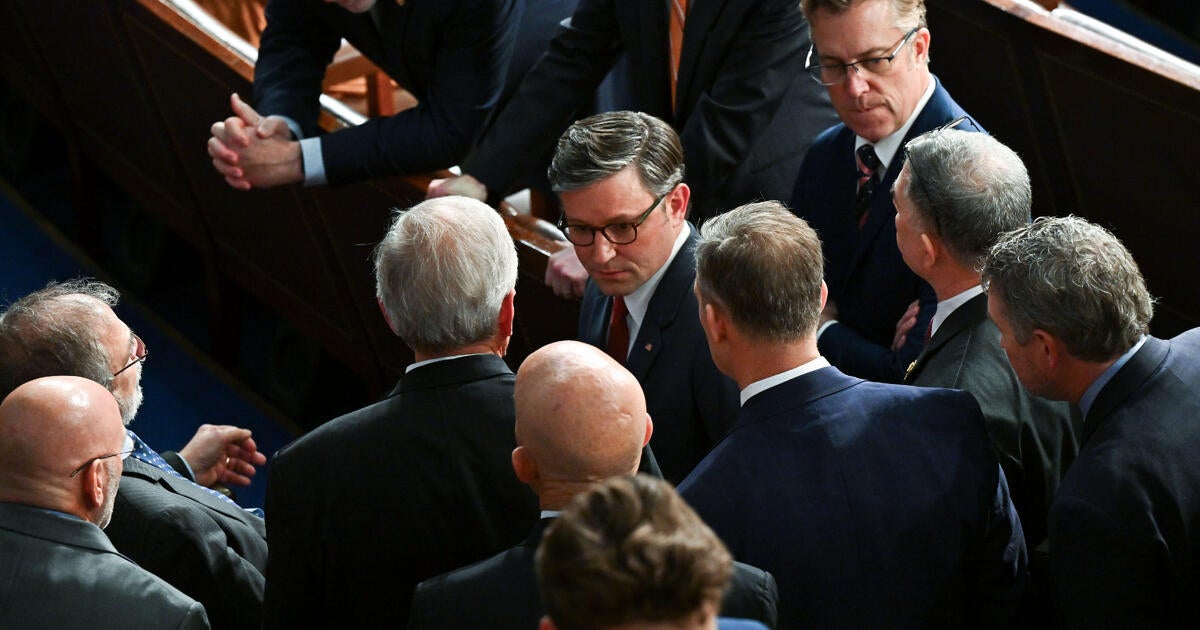House GOP Explores Last-Minute Solutions to Prevent Government Shutdown Amid Trump Talks
As the deadline for a potential government shutdown draws near, House GOP leaders are finding themselves in a race against time to negotiate a stopgap measure that would keep the government running. The complex dynamics of these discussions have been further complicated by the involvement of key Republican holdouts meeting with former President Donald Trump. This article explores the current situation, the implications of a shutdown, and the ongoing negotiations within the House GOP.
The Impending Threat of a Government Shutdown
The specter of a government shutdown looms large as Congress approaches the end of the fiscal year. A government shutdown occurs when Congress fails to pass sufficient funding for government operations, resulting in the closure of non-essential services and the furlough of federal employees. With critical programs at stake, the urgency for a resolution cannot be overstated.
Historically, government shutdowns have had significant repercussions, affecting not only government employees but also the broader economy. The last major shutdown in 2018-2019 lasted 35 days and resulted in an estimated $11 billion in economic losses, making it clear that bipartisan cooperation is essential to avoid repeating such a scenario.
House GOP’s Strategic Negotiations
In light of the impending shutdown, House GOP leaders have been actively seeking a stopgap measure that would provide temporary funding while allowing more time for comprehensive budget negotiations. The goal is to pass a continuing resolution (CR) that would maintain funding levels at current rates for a specified period, typically a few weeks or months.
- Temporary Relief: A CR would provide immediate relief, giving Congress the breathing room needed to negotiate a more permanent budget solution.
- Funding Priorities: House GOP leaders are prioritizing funding for defense and border security, reflecting their party’s core values.
- Bipartisan Support: To pass a CR, bipartisan support will be crucial, necessitating negotiations with Senate leaders as well.
Challenges from Within the Party
Despite the urgency, there are significant hurdles to overcome. A faction of House Republicans, often referred to as the Freedom Caucus, has expressed reservations about any continuing resolution that does not substantially cut spending. This group firmly believes in fiscal conservatism and is unwilling to support measures they view as a continuation of excessive government spending.
As negotiations unfold, the Freedom Caucus’s demands have led to tensions within the GOP. This internal strife complicates the path forward, as House Speaker and GOP leadership must balance the need for a quick resolution with the demands of their more hardline members.
The Role of Donald Trump
Adding another layer of complexity to the situation is the involvement of Donald Trump. As a pivotal figure in the Republican Party, Trump’s opinions and endorsements carry significant weight. Key holdouts among the House GOP have sought Trump’s backing, hoping to align their demands with his vision for the party.
Trump’s influence can be a double-edged sword. On one hand, his approval can unify the party’s base and strengthen the position of those advocating for stricter fiscal measures. On the other hand, his unpredictable nature and sometimes divergent views from mainstream Republican strategies could create further divisions.
Potential Outcomes of the Negotiations
The outcome of these negotiations will not only impact the immediate funding of government operations but could also shape the political landscape for the upcoming election cycle. Here are a few potential scenarios:
- Successful Passage of a CR: If House leadership manages to negotiate a CR that garners enough support, the government will remain funded, allowing time for longer-term negotiations.
- Division in the GOP: A failure to secure a CR could lead to a split within the party, with moderate Republicans potentially breaking ranks to support a bipartisan solution while hardliners push for deeper cuts.
- Implications for 2024 Elections: How the GOP manages this crisis could impact their standing in the 2024 elections, especially as voters evaluate their effectiveness in governing.
Public Sentiment and Economic Impact
The public’s perception of a government shutdown can significantly influence political dynamics. Polls consistently show that a majority of Americans oppose shutdowns, viewing them as a sign of governmental dysfunction. Concerns about the economy are heightened during these periods, as uncertainty can lead to decreased consumer confidence and spending.
Businesses that rely on government contracts or services are particularly vulnerable during shutdowns. Small businesses, in particular, may suffer as federal contracts are frozen, and services such as loan approvals and permits are delayed. The ripple effects can be felt throughout the economy, emphasizing the need for a swift resolution.
Conclusion
The House GOP’s efforts to explore last-minute solutions to prevent a government shutdown are taking place amid complex negotiations and the influential presence of Donald Trump. As leaders work to balance party demands with the necessity of bipartisan cooperation, the stakes remain high. The consequences of a shutdown extend beyond government operations, impacting the economy and the political landscape. With time running out, the urgent need for compromise and effective governance has never been more critical.
As discussions continue, all eyes will be on Congress to see if they can navigate these turbulent waters and avoid a shutdown that could have far-reaching implications for the country.
See more BBC Express News

